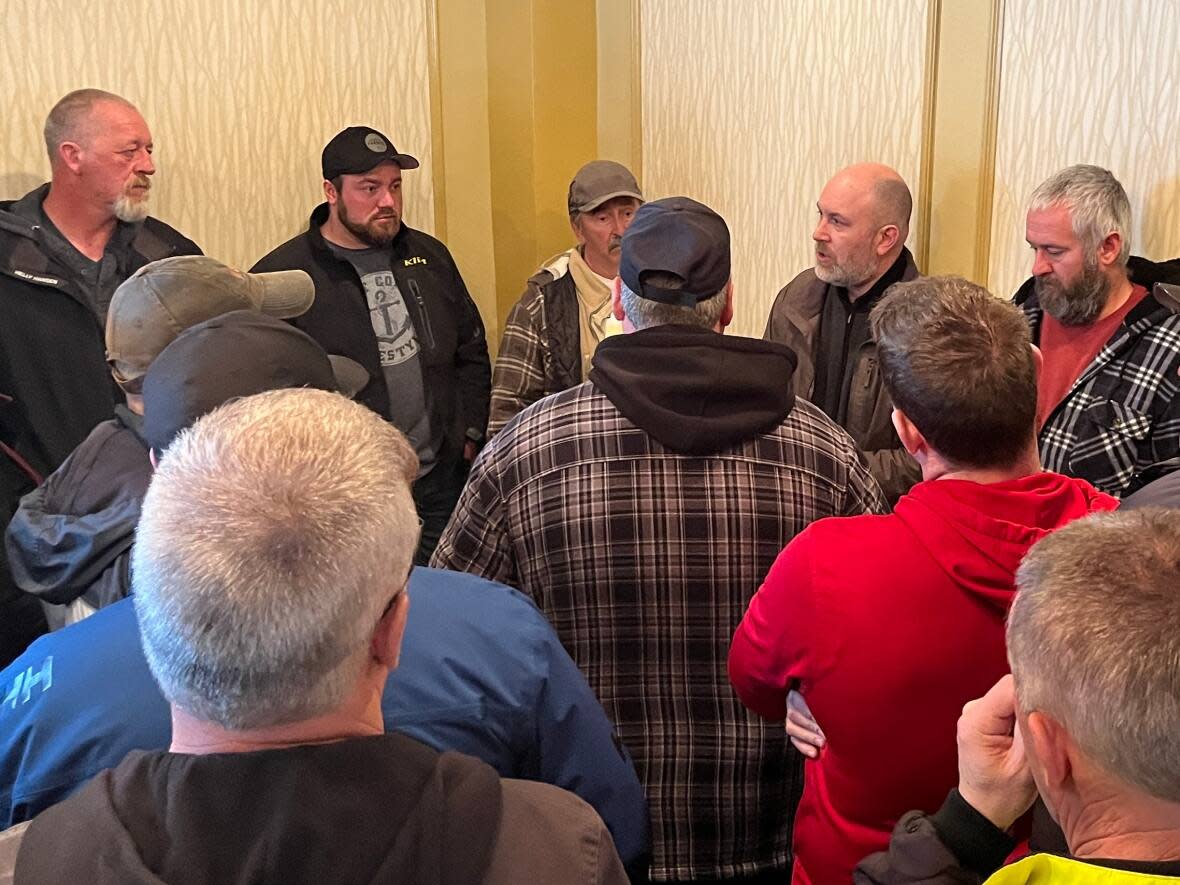Promise of review, meeting with DFO calms N.L. crab harvesters following week of protesting

A week of angry protests by inshore crab harvesters from eastern Newfoundland cooled slightly Friday following the promise by the federal fisheries minister of a review of their concerns, and a meeting on Monday between union and federal fisheries officials.
Dozens of harvesters were summoned to a hotel in St. John's on Friday morning by their union for an update on efforts to modify or rip up a management strategy that harvesters say is restricting their chances of higher quotas, and has the potential to drive many of them out of business as markets shrink following a banner year in 2022.
Protests occurred throughout the week in St. John's as harvesters took their frustrations to the regional headquarters of the Department of Fisheries and Oceans and to Confederation Building, home of the provincial legislature.
The protesters also butted heads with their own union leadership at times, at one point storming into a hotel ballroom and interrupting critical talks at setting a price formula for the harvest, which typically gets underway in April and is the province's most valuable fishery.
The union had been promised a letter on the matter from federal fisheries minister Joyce Murray by Thursday night, union officials told CBC News, so the union organized a meeting for Friday morning, and dozens of people attended. But by mid-morning, the letter had not arrived and frustrations started to boil over among those gathered at the Ramada.
There was talk of once again staging a protest, and at one point fisheries union president Greg Pretty donned his jacket and told protestors to follow him to DFO's White Hills location.
"Let's go. Let's get out," Pretty said.

But the anger subsided after the union's secretary-treasurer, Jason Spingle, announced he had belatedly received a letter from the minister.
Spingle read the letter aloud to the crowd, and while it wasn't everything they were demanding, it was enough to bring a temporary end to the protests.
In her letter, Murray said her department will consider the concerns of harvesters when setting this year's total allowable catch, and commit to a review of their concerns about the so-called precautionary approach framework ahead of the next year's fishing season.
The union's secretary-treasurer, Jason Spingle, encouraged the protestors to be patient while things unfold in the coming days.
"If we get a review in one year versus two or three years, that's a strong suggestion that it's going to change," said Spingle.
"I just don't think that the minister is going to change now. She's gone as far as she's going."
But that wasn't enough for Petty Harbour fisherman Danny Hearn, who said he's tired of hearing the word review.
"We got the pressure on now. You can't take it away. This is the first time we ever got a bit of movement. And this review? It's lies," said Hearn.
DFO is expected to release the total allowable catch for snow crab in Newfoundland and Labrador waters the coming days.
DFO implemented this year what's called a precautionary approach framework for the management of crab stocks. Part of the strategy in area 3L, which stretches from Bonavista Bay on the northeast coast, to St. Mary's Bay on the southern Avalon, includes separate biomasses for the inshore and offshore fleets.
Inshore harvesters say the creation of two biomasses makes no sense, and has resulted in inshore quotas remaining static, while the larger 40-and-over fleet has been awarded larger quotas.
"In the largest crab fishery in the world with a with an abundance of crab, we have a particular fleet that can't grow and that is criminal. That has to be fixed," Pretty told reporters.
In her letter, Murray hinted there is flexibility in the rules to exceed the maximum percentage of the stock that can be harvested "when a stock is in the healthy zone and when there are high levels of biomass present."
She said such flexibility "will be considered" in DFO's management plan for the upcoming harvest, but it appears the demand for a single crab biomass in 3L will not happen, at least for this year.


